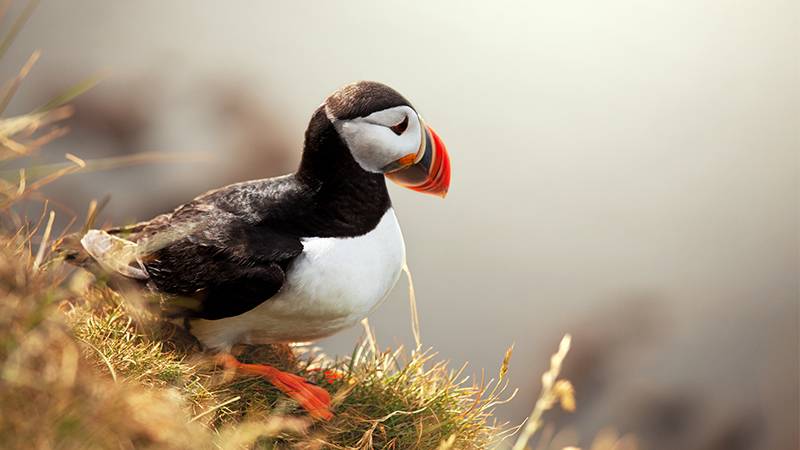The 50th anniversary of Project Puffin, initiated in 1973 with the aim of reintroducing puffins to the islands off the coast of Maine, has recently concluded. The project, which started with the relocation of puffin chicks from Newfoundland, has grown into a global exemplar of seabird restoration, increasing the puffin population to over 1,300 breeding pairs across several islands in Maine. However, the changing climate and its impact on the marine ecosystem pose new challenges to the puffins and other seabirds.
This summer, researchers observed a significant change in the puffins’ diet, with a majority of them bringing back sand lance, a small eel-like fish, to feed their chicks. This fish, which is not usually a primary part of the puffins’ diet, became surprisingly abundant, providing a rich source of nutrition for the seabirds.
The sand lance plays a crucial role in the marine food web, being a staple in the diet of 72 animal species, including other fish that are commercially valuable to humans.
Despite this unexpected bounty, the changing climate has introduced a level of unpredictability in the availability of prey for puffins. The Gulf of Maine, where the puffins reside, is experiencing rapid warming, leading to marine heatwaves that drive traditional cold-water prey too deep or too far for puffins to catch.
This has forced puffins to adapt to a changing menu of available prey, sometimes resorting to less nutritious alternatives.
In recent years, puffins have been seen bringing other fish like haddock to their chicks, a trend supported by federal and state management efforts that have seen a rebound in haddock populations.
However, the marine food web remains in flux, with overfishing and climate disruptions causing declines in other fish species like herring, which used to be a primary food source for puffins.
Tens of thousands of seabirds did successfully fledge chicks in the Gulf of Maine this summer. Overall bird populations on many islands remained strong. In mid-August, at the season-ending conference of the Gulf of Maine Seabird Working Group, several islands in the Cape Cod region reported increases in various tern populations.
The changing weather patterns, characterized by above-average heavy rains and continuous days of soaking fog, have also impacted the seabirds’ nesting success. This year saw flooded tern nests and a significant number of chicks succumbing to the harsh weather conditions.
Despite these challenges, puffins demonstrated remarkable adaptability, seamlessly transitioning from one type of fish to another to feed their chicks.
According to The Maine Monitor, the researchers involved in Project Puffin express both amazement at the puffins’ resourcefulness and concern for the future, noting the increasing reliance on unpredictable fish species for chick-rearing. The changing climate not only affects the puffins’ feeding habits but also brings about more predators and harsher conditions for the researchers on the ground.
As the world grapples with the effects of climate change, the puffins serve as a reminder of the intricate connections in the ecosystem and the urgent need for conservation efforts. The observations from Project Puffin underscore the delicate balance of the marine ecosystem and the unforeseen challenges that climate change brings to conservation, highlighting the puffins’ resilience and the continuous learning journey in understanding and protecting seabirds in a changing world.
More inspiring green news similar to this:


